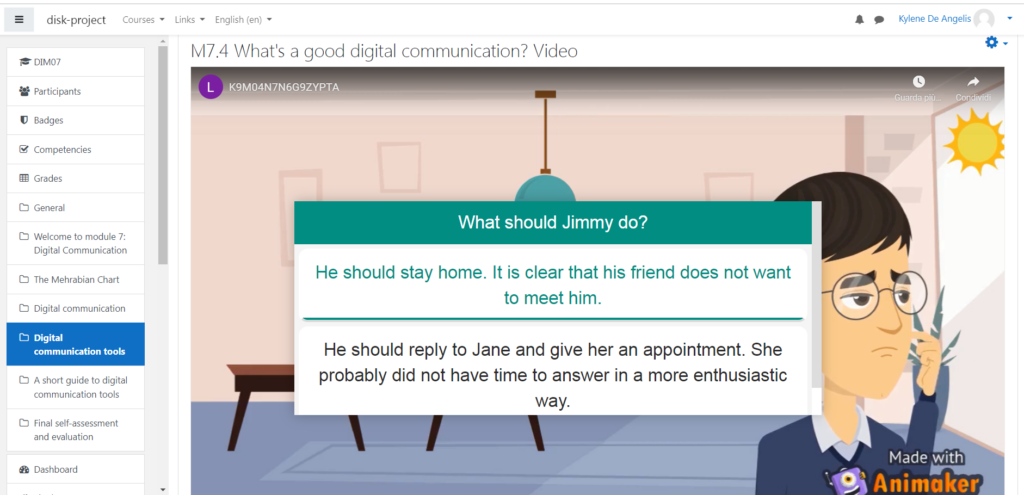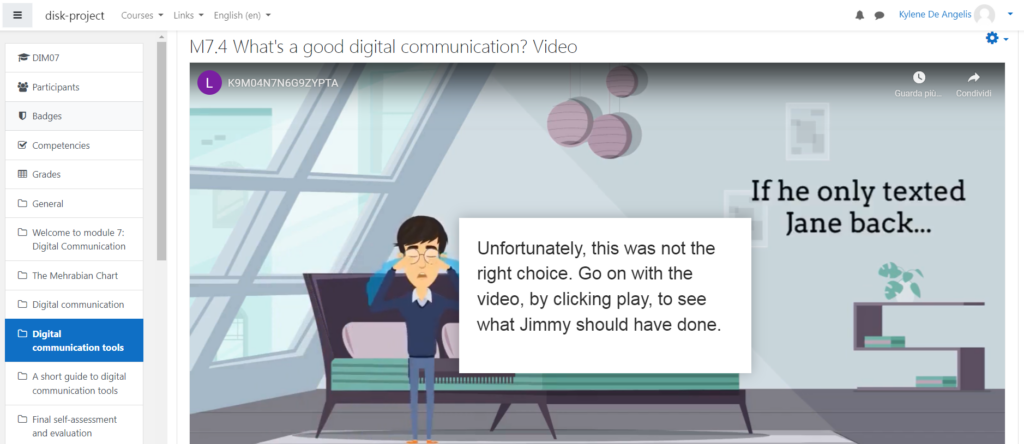In the DISK training course, we partners tried to offer different interactive elements to stimulate and optimize the learning process of course participants. Among the H5p applications, interactive presentations allow educators to add many useful involving learning elements and insights. The same is valid for H5P interactive video.
In several DISK modules, interactive presentations were used to add short step-by-step descriptions in video tutorials created by the partners (i.e. Module 11- Gmail password recovery procedure) and/ or for pop-up quizzes to check the learners’ comprehension in the middle or at the end of an existing video (i.e. Module 15- 21st Century Education by AITSL) . In this post, we focus on the use of interactivity for another type of video, the educational animation.
The impact of educational animations in learning mechanisms has been studied by experts for several years and has proved to be an excellent knowledge transfer tool for different age groups. In general, educational videos have the following benefits:
- They allow the learner to visualize the concepts and reach higher levels of understanding
- Varied content, namely the combination of both audio and visual learning material, improves knowledge retention.
In module 7- Digital communication, we explore the main ICT tool used for communication nowadays (emails, instant messaging, social networks) and support DISK learners in differentiating between these tools according to the situation, interlocutors, and communication purposes. The video titled “What’s a good digital communication” is an example of educational animation and was created with Animaker, a cloud-based video animation software that helps users to create videos using pre-built characters, graphics, and templates. The crossroad option within the H5P interactive video applied to the animation previously mentioned allowed us to build two different scenarios upon which the learner could decide.

The aim was making learners feel more involved and control a self-paced learning process. The educational animation reinforced this process by letting learners visualize concepts and situations with simple video-making software. Obviously, Animaker is one of the multiple platforms that you can use for creating educational animations. Other platforms like PowToon, Animatron , Vyond, etc. allow you to exploit the same basic editing tools and templates for free. (Hint: check the different subscription plans if you want more editing options).

